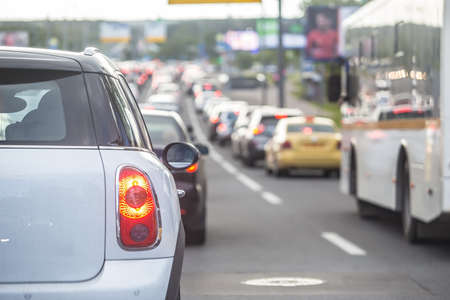Introduction to Shared Mobility in the UK
The landscape of urban transportation in the UK is evolving rapidly, with shared mobility at the forefront of this transformation. Over recent years, British cities such as London, Manchester, and Birmingham have witnessed a surge in shared mobility options—ranging from car clubs and bike-sharing schemes to electric scooter hire and on-demand ride-sharing services. This shift is more than just a trend; it’s a response to pressing challenges like traffic congestion, air pollution, and limited parking spaces that characterise many urban centres across the country.
Shared mobility refers to transportation services that are used by multiple people either simultaneously or sequentially. In the UK context, this encompasses a variety of modes designed to offer flexible alternatives to private car ownership, making city travel more sustainable and efficient. The significance of this movement lies not only in its potential to reduce the number of vehicles on the road but also in its ability to make urban transport more accessible and inclusive for all Britons.
To better understand how shared mobility addresses common urban challenges, consider the following table:
| Challenge | How Shared Mobility Helps |
|---|---|
| Congestion | Reduces individual car use and encourages shared journeys |
| Air Pollution | Promotes use of low-emission vehicles like e-bikes and electric cars |
| Parking Shortage | Lowers demand for parking by decreasing car ownership rates |
| Inequality in Access | Makes transport more affordable and available across different communities |
This growing ecosystem is helping UK cities reimagine their streetscapes, prioritising people over private cars and paving the way for cleaner, healthier, and more liveable urban environments.
2. Key Modes and Examples of Shared Mobility
Shared mobility in the UK is rapidly evolving, offering city dwellers a variety of flexible options to get around while reducing congestion and supporting sustainability. Let’s explore the main types of shared mobility available across British cities, along with some local examples that are shaping the future of urban transport.
Car Clubs: Flexible City Motoring
Car clubs have become a staple in many UK urban centres, providing members with access to vehicles for short-term use without the hassle or cost of ownership. Pioneers like Zipcar and Enterprise Car Club operate extensive networks in London, Manchester, Edinburgh, and beyond. These services allow users to book cars by the hour or day, ideal for spontaneous trips or errands when public transport won’t do.
Bike & E-Scooter Sharing: Active Urban Mobility
With an increasing emphasis on active travel and clean air zones, bike sharing schemes have flourished across the UK. The iconic Santander Cycles (often called “Boris Bikes”) are a familiar sight on London’s streets, while other cities like Glasgow and Liverpool have their own local offerings. E-scooter trials are also underway in cities such as Bristol and Birmingham, adding a swift, fun option for short journeys. Here’s a quick comparison:
Mode |
Key Providers |
Cities Available |
Main Benefits |
|---|---|---|---|
Bike Sharing |
Santander Cycles, Nextbike | London, Glasgow, Cardiff, Liverpool | Healthy, eco-friendly, affordable |
E-Scooter Sharing |
Voi, Lime, Tier | Bristol, Birmingham, Nottingham | Quick, convenient for short trips |
Car Clubs |
Zipcar, Enterprise Car Club | London, Manchester, Edinburgh | No ownership costs; pay-as-you-go flexibility |
Ride-Hailing Services |
Uber, Bolt, Free Now | Nationwide (urban focus) | Door-to-door convenience; easy app booking |
Ride-Hailing: The Digital Taxi Revolution
The UK’s ride-hailing scene has seen a transformation with global platforms like Uber, alongside homegrown alternatives such as Bolt and Free Now. These services offer an on-demand alternative to traditional black cabs and minicabs, particularly popular for late-night journeys or when public transport is less frequent. With cashless payments and real-time tracking as standard features, ride-hailing is now part of everyday life for many urban Brits.
The Local Impact of Shared Mobility Choices
The availability and uptake of these shared mobility modes vary from city to city—reflecting local policies and community needs—but together they’re providing more sustainable ways to navigate the UK’s vibrant urban landscapes. Whether you’re hopping on a bike for your morning commute or reserving a car club vehicle for a weekend escape to the countryside, shared mobility is making it easier than ever to explore British cities with freedom and flexibility.

3. Cultural Attitudes and Urban Adoption
When it comes to shared mobility, British attitudes have been shaped by a blend of tradition, practicality, and a growing environmental consciousness. While many Brits value the convenience of personal vehicles, there is an increasing openness to alternatives—especially among younger generations and urban dwellers who are keen on sustainability and cutting down costs. Several factors influence the adoption of shared mobility in the UK, including public trust in new technologies, concerns about privacy and safety, and the reliability of transport services.
The uptake of shared mobility varies significantly between UK cities. In London, for example, the dense population and robust public transport network make car sharing, bike hire schemes like Santander Cycles, and app-based ride-hailing services both popular and practical. Manchester, with its expanding tram network and growing student population, has seen a steady rise in e-scooter trials and car clubs aimed at reducing congestion. Edinburgh, on the other hand, presents unique challenges: its historic streets and hilly terrain mean that bike sharing is less prevalent, but initiatives like shared electric vehicles are gaining traction as residents seek greener ways to get around.
City |
Main Shared Mobility Modes |
Key Influencing Factors |
|---|---|---|
London |
Car clubs, bike share schemes, ride-hailing apps | High population density, integrated transport options, tech-savvy population |
Manchester |
E-scooters, car sharing, tram integration | Younger demographics, congestion issues, university presence |
Edinburgh |
Shared EVs, limited bike share | Historic layout, challenging topography, focus on sustainability |
These variations highlight how local culture and city infrastructure play a crucial role in shaping both attitudes towards shared mobility and the speed at which new solutions are adopted. As more Britons embrace these flexible options—whether out of necessity or choice—the future of urban transportation looks increasingly diverse across the UK’s major cities.
Impact on Urban Life and Environment
Shared mobility is making a significant difference in the day-to-day experience of UK cities, offering tangible benefits for both residents and the environment. By encouraging people to use car clubs, bike-sharing schemes, e-scooters, and ride-sharing apps rather than private vehicles, urban congestion is being tackled head-on. Fewer cars on the road mean less time spent stuck in traffic jams—a real win for anyone navigating city centres like London, Manchester or Birmingham.
Cleaner air is another major perk. With shared mobility options reducing reliance on petrol and diesel vehicles, emissions have dropped in several pilot zones. The move towards electric fleets among shared services only accelerates this trend. For example, schemes like Santander Cycles and Lime e-bikes directly contribute to better air quality, supporting government targets for net zero by 2050.
Urban space is at a premium in British cities, where historic layouts often leave little room for wide roads or vast car parks. Shared mobility helps reclaim this space. Instead of endless rows of parked cars, city councils can create more green spaces, pop-up parks, or even extend pavement cafés—helping local businesses thrive while making public areas more inviting.
| Aspect | Traditional Car Ownership | Shared Mobility |
|---|---|---|
| Congestion | High | Reduced |
| Air Quality | Poor (more emissions) | Improved (fewer vehicles) |
| Urban Space Usage | More parking needed | Space repurposed for community use |
The shift towards shared transport also supports a healthier lifestyle, as more people opt to walk or cycle as part of their daily commute. This aligns with broader UK initiatives to promote active travel and reduce dependence on personal cars. Ultimately, shared mobility is not just changing how we get around—it’s helping to shape cleaner, greener, and more liveable cities across the UK.
5. Challenges and Policy Perspectives
While the promise of shared mobility in the UK is substantial, it doesnt come without its hurdles. Urban areas from London to Manchester are grappling with issues ranging from regulatory ambiguity to infrastructure limitations and the need for inclusive access. Addressing these obstacles is essential if shared mobility is to become a pillar of British urban transport.
Regulatory Roadblocks
One of the central challenges lies in creating clear and consistent regulations for emerging services like e-scooters, ride-hailing, and car-sharing schemes. The patchwork approach—where local councils interpret and implement national guidelines differently—can be confusing both for operators and users. For example, while some cities welcome e-scooter trials, others remain cautious due to safety concerns.
Infrastructure Gaps
The success of shared mobility also hinges on robust infrastructure. Many UK cities lack dedicated lanes or parking spaces for micro-mobility options, leading to cluttered pavements and tensions with pedestrians. Charging points for electric shared vehicles are still insufficient outside major metropolitan hubs, making it tricky for schemes to scale up sustainably.
| Challenge | Description | Current Approach |
|---|---|---|
| Regulation | Lack of nationwide standards for new mobility modes | Pilot programmes, ongoing legislative reviews |
| Infrastructure | Insufficient cycling lanes, EV charging points, secure parking | Council-led upgrades, government funding initiatives |
| Inclusivity | Access barriers for rural residents, those with disabilities or limited digital skills | Consultations with advocacy groups, tailored pilot schemes |
Ensuring Inclusivity
A truly effective shared mobility system must be accessible to all. Yet, digital exclusion, cost barriers, and uneven service coverage mean that some communities—especially in rural areas or among those less tech-savvy—are left behind. Local authorities are partnering with community organisations to design more inclusive schemes and offer alternative ways to access services beyond just smartphone apps.
Government & Council Initiatives
The UK government has set out a Future of Mobility: Urban Strategy, encouraging innovation while prioritising safety and accessibility. Many local councils are deploying their own strategies—like Greater Manchester’s Bee Network—to integrate shared bikes, buses, and trams into a seamless system. However, aligning national ambitions with local realities remains an ongoing balancing act.
6. The Road Ahead: Future Trends and Innovations
The future of shared mobility in the UK is being shaped by a blend of cutting-edge technologies, evolving social norms, and a drive towards more sustainable urban environments. As British cities adapt to new demands and expectations, several trends and innovations are poised to redefine how we get from A to B.
Emerging Technologies Paving the Way
From autonomous vehicles to AI-powered ride-hailing platforms, technology is at the heart of the shared mobility revolution. Electric vehicles (EVs) are becoming increasingly prevalent in car-sharing fleets, reducing emissions and noise pollution in city centres. Additionally, advancements in mobile apps have streamlined the process of booking, paying for, and accessing shared transport, making it easier than ever for users to opt for flexible alternatives over private car ownership.
| Technology | Impact on Shared Mobility |
|---|---|
| Electric Vehicles (EVs) | Lower emissions, cleaner air in urban areas |
| Autonomous Vehicles | Potential for 24/7 mobility services with reduced operational costs |
| Mobile Platforms | User-friendly access, real-time updates, seamless payments |
Changing Behaviours and Social Shifts
Britons are increasingly conscious of their environmental footprint and open to alternatives that reduce congestion and carbon emissions. Younger generations, in particular, value convenience and flexibility over traditional car ownership. This shift is reflected in growing memberships of car clubs, increased use of bike-share schemes, and a willingness to combine different modes of transport for daily commutes or weekend getaways.
Key Behavioural Changes
- Preference for pay-as-you-go mobility solutions
- Increased multimodal journeys (combining trains, bikes, e-scooters)
- Heightened demand for sustainable travel options
The Horizon: What’s Next?
The next chapter for shared mobility in British cities will likely include deeper integration between public transport and shared services. Mobility-as-a-Service (MaaS) platforms are already being trialled in cities like Birmingham and Manchester, offering seamless planning and payment across buses, trains, bikes, and car-shares. Expect further collaboration between local councils and private operators to develop infrastructure—think dedicated EV charging points or secure docking stations—that encourages more residents to ditch private cars.
Looking Forward: Opportunities & Challenges
| Opportunities | Challenges |
|---|---|
| Sustainable city centres; improved air quality; increased accessibility for all residents | Regulatory hurdles; data privacy concerns; ensuring equitable access across regions |
The road ahead is brimming with potential. With thoughtful investment in technology and infrastructure—and a continued emphasis on sustainability—the UK’s urban transport landscape is set to become more dynamic, inclusive, and environmentally friendly than ever before.


